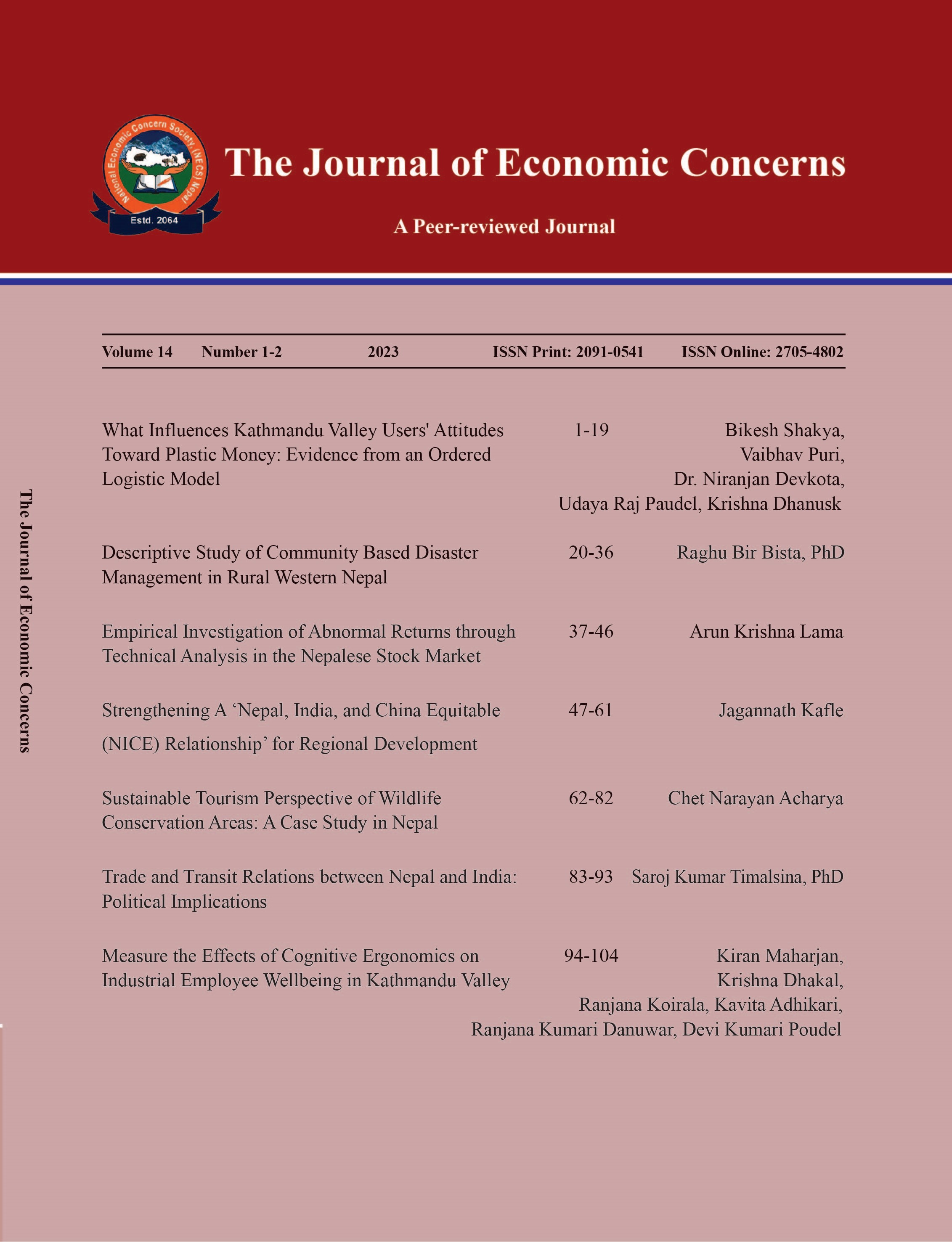Descriptive Study of Community Based Disaster Management in Rural Western Nepal
DOI:
https://doi.org/10.3126/tjec.v14i1-2.62311Keywords:
Community, Collective Action, Preparedness, Disasters, Early Warning System, NepalAbstract
This study inspects community-based disaster management (CBDM) in Nepal. Employing secondary and primary data, the study used descriptive statistics tool. Firstly, the study identified multiple natural risks (flood and landslide). Secondly, in the practice of CBDM, the collective action was found mainly on planning of disaster calendar, early warning, preparedness, and rehabilitation. Thirdly, there was mean salary income loss per annum (330 USD). It is one third of national per capita. Having a significant economic cost, CBDM reduced effectively humanitarian and economic cost of the community. Thus, CBDM is effective collective action to be resilient at the community. Therefore, mainstreaming CBDMG in multi-hazard risk management program, the government should improve its technical capacity and performance by training &equipment for disaster resilience. This study is expected to contribute disaster risk reduction program of the local, province and central government and also preparedness to resilient.




